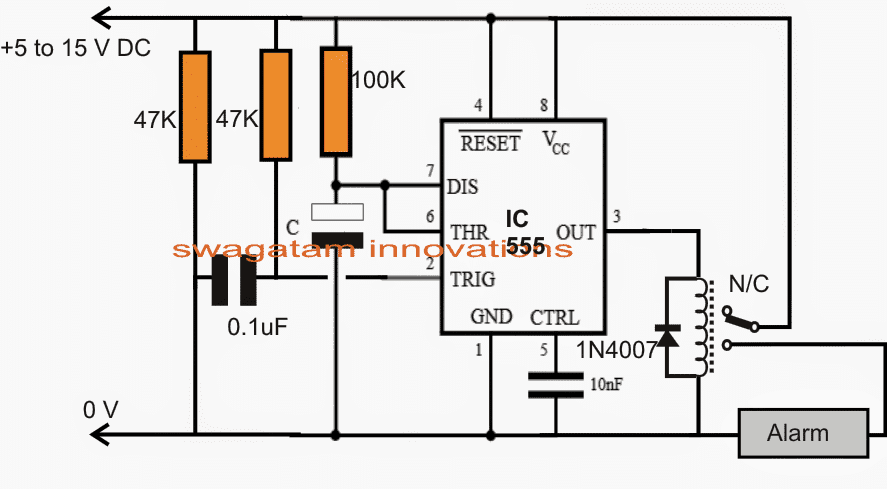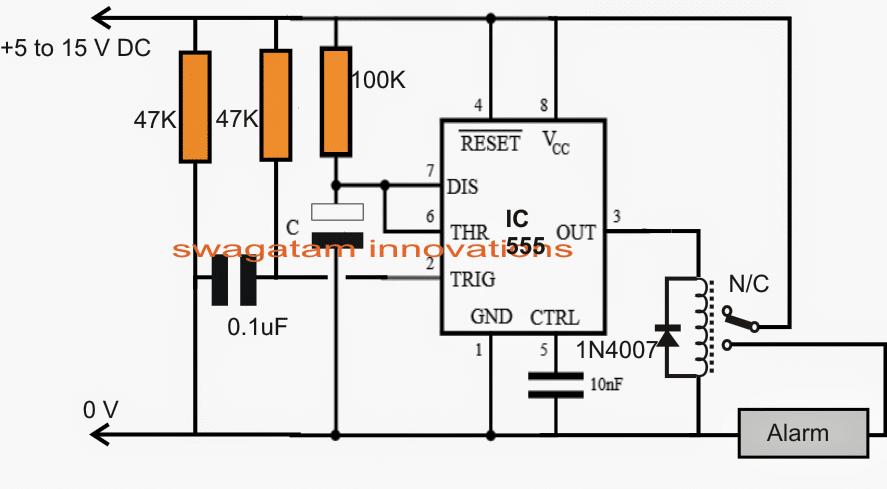In this post I have explained a simple monostable based power switch ON alarm circuit which automatically switches OFF after an adjustable preset delay. The idea was requested by Mr. Will Boswell.
Technical Specifications
Hi there, my name is Will Boswell. I am currently working on a project that involves adding an alarm sounder to an existing circuit, I shall try and explain as best possible.
The existing system is a warning light system whereby when the high voltage kit that I use is turned on, red beacon lights flash in order to warn those inside and outside of the testing area. These lights operate at 24V.
I would like to put a sounder in that sounds for 5 - 10 seconds when the system is turned on, in addition to the lights.
I was rather hoping that I would be able to just piggyback off of one of these lights for my supply but after my own research I have begun to get rather lost and it is a few years since I was at college!
So in a short summary, I am looking for some assistance in regards to having an alarm sound for 5 - 10 seconds every time the system is turned on / lights are activate.
Please any questions, just ask!
Many Thanks in advance
The Design
The requested power switch ON alarm circuit using a delay OFF circuit may be witnessed in the given diagram.
It's basically built around a standard IC 555 monostable multivibrator configuration. The operations are rather simple:
When power is switched on across the circuit, the 0.1uF capacitor momentarily grounds pin2 of the IC, sending an instantaneous triggering signal to the 555 monostable.
This immediately prompts the output of the IC to go high causing a toggling voltage to be activated for the attached relay.
The relay switches ON itself and the alarm unit connected with its N/O and the pole.
The alarm begins buzzing only until the relay shuts off automatically due to the featured monostable one shot characteristic of the IC 555.
The ON period of the relay or the IC output is determined by the values of the 100kresistor and caapcitor C. Different values for C may be tried in between 10uF and 100uF for achieving the closest possible duration of 5 to 10 seconds.
Circuit Diagram

